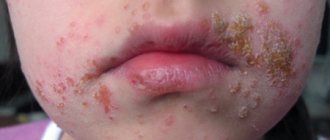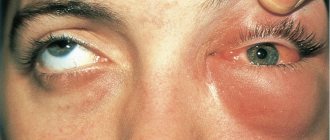Sphynx cats are amazing creatures. They are very smart, loyal and extremely sensitive pets. However, these beauties also have their drawbacks.
The most difficult thing is caring for sphinxes. They are very picky eaters and prone to many diseases. The most common of them are dermatitis or allergies, which manifest themselves as profuse rashes on the skin and unpleasant ulcers on the animal’s body.
Types of allergies
Dermatitis
Allergy to environmental elements. The manifestation can be noticed in sphinxes up to 3 years old. It is very insidious because it is very difficult to define, and very little is needed to occur. Anything can cause it (mold, pollen, chemicals, etc.)
Allergy to flea bites
The Sphynx has no fur and many people believe that there is no place for fleas, but this is a deep misconception. They can be inside the ears and in the armpits. Fleas can also bite after jumping from another animal. The worst thing is that some owners do not treat him at all, because they believe that their pet does not and cannot have fleas.

Allergy to food
Food allergies in sphinxes are very difficult to determine, and the allergen is excluded from the diet. It does not develop in one day, because some allergens first accumulate in the body, and then they only begin to act. It is easier to determine allergies in animals older than 1 year. But when the allergy in Sphynx cats is repeated, a minute is enough for its reaction.
Also, in Sphynxes, allergies to food and dairy products can develop throughout the year. Most often, cats are allergic to protein found in foods. Often, owners feed their pet chicken without paying attention to other protein. Some dry food manufacturers skimp on ingredients and add a lot of untested chemicals.
Ulcers
Appear on the skin, mucous membranes and oral cavity. It has clear red borders and can sometimes be painful and itchy.
Esinophilic plaque
Manifestation of eosinophilic allergic syndrome. Appears on the stomach and inner thighs. It appears as an oval red lesion.
Esinophilic granuloma
Appears on the skin, mucous membranes and oral cavity of the sphinx. Lesions can appear on any part of the body. Yellowish-pink plaques appear.
Sphynxes are allergic to flowers
All cats love to taste our flowers, but this habit can lead not only to allergies, but to death. We all urgently need to know poisonous flowers:
- Lilies. Even pollen is dangerous for sphinxes; it can cause severe allergies and kidney failure.
- Azalea. May kill the animal.
- Dieffenbachia. — Causes allergies and burns of mucous membranes.
- Gartensia. Causes allergies and intoxication.
Diagnostics

Allergic reactions in a pet can be recognized by several signs:
- Sores on the skin (they can vary from light pink to almost black).
- Pimples in the armpits and groin area.
- Itching, external restlessness of the cat.
- A burning sensation that leads to severe scratching of wounds on the cat’s body.
- Runny nose, redness and watery eyes.
Symptoms of Sphynx allergies
- The appearance of dandruff.
- Itching.
- Red rash.
- Moisture in the armpits.
- Otitis.
- The cat rubs its nose and bites its paws.
- The appearance of ulcers on the body.
- The animal is lethargic and sleeps a lot.
Photo: Allergic spots on the body of the Sphynx.
All these manifestations do not always indicate an allergy. These may be: vitamin deficiency, fungal diseases, endocrine gland disease and scabies. For example, dermatitis is more related to seasonal allergies, and fleas bite on the tail and back.
To determine the allergy, you need to take your Sphynx to the veterinarian. Skin allergy symptoms may last up to 10 weeks. The manifestation of allergies in sphinxes can be seen in the photo below.
Possible reasons
Sphynx cats have skin problems throughout their lives, since they do not have hair, which provides other cats with reliable protection from external irritants. Therefore, Canadian and Don Sphynxes are often troubled by the following pathologies:
- Comedones. The most common cause of small rashes in Sphynx cats of all ages. The size of the rashes is rarely larger than a match head. They are localized mainly on the tail and belly. The number sometimes reaches several dozen. The color is flesh-colored, sometimes white. When pressed, a thick gray secretion may be released. For minor manifestations, salicylic acid is used to treat the affected surfaces; in severe cases, Zinerit.
- Acne. They differ from comens in that they can become inflamed and merge with each other into one large lesion. Blackheads are almost always filled with pus. After opening, deep ulcers remain in their place, which scar when healing. Acne is difficult to treat and tends to have a long, chronic course. There is a close connection with hormonal changes, so they often occur before the age of one year. In cats, the problem of acne can be solved by castration. Doxycycline or Zinerit can be used as drug treatment.
- Vasculitis. In sphinxes it appears as a rash on the skin after strong experiences. It can be triggered by a move, an exhibition, or meeting a new animal. Also, the appearance of rashes can be caused by prolonged use of antibiotics. In most cases, the activity of the process fades away after a week. If this does not happen or the cat’s condition is aggravated by the inflammatory process, then it is better to seek help from a dermatologist.
- Seasonal dermatitis. It is observed mainly in cats before and after estrus. During this period, a small rash may appear in the area of the mammary glands and groin, less often on the back and limbs. The main thing is to avoid scratching to avoid bacterial infection. Otherwise, you will have to deal with severe vasculitis and bacterial inflammation.
- Allergy. Sphynx cats are known to be prone to allergic reactions. An exacerbation can be triggered by improperly selected food, parasites, or contact with plants or chemicals. It can manifest itself acutely with the appearance of large red spots and small rashes. Severe itching can lead to excessive itching and the addition of a secondary infection, which aggravates the manifestations of allergies. For Sphynxes, it is recommended to initially select special hypoallergenic food from Royal Canin or Hills. When contacting a potential allergen, Fenistil drops are a great help. To make an accurate diagnosis, blood biochemistry and cytology from the places where the spots and rash appeared are required.
- Bites. Most often, Sphynx rashes appear after flea bites. But the bites themselves are not as bad as an allergic reaction to their saliva. In cats prone to skin vasculitis, it manifests itself acutely. Due to severe itching and constant scratching, deep wounds appear and do not have time to heal. Here you can’t do without a cytological examination, and only after confirming the diagnosis it is necessary to select drugs for treatment based on the severity of the clinical picture. As a preventive measure, it is recommended to regularly treat all animals living under the same roof with Frontline and Advantage preparations. Housing can be treated with Butox solution, which is added to the water during wet cleaning.
- Demodecosis. Or a subcutaneous mite, as people like to call it. Present on the skin of every cat. Activity can be triggered by chronic liver diseases, tumor processes, long-term use of antibiotics, and even strong emotions. In Sphynxes, demodicosis manifests itself in the form of a black rash that can be scattered throughout the body. Common locations are the bends of the limbs, tail, chin. The diagnosis can be confirmed only after cytological examination by plucking from the lesions. Single lesions can be observed, as they can resolve themselves. Treatment is given to cases where the affected area rapidly spreads throughout the body. The success of any treatment will greatly depend on the correct identification of the root cause that provoked the activity of the tick.
Allergies in Sphinxes: treatment
In order to cure food allergies in Sphynx cats, you need to follow a diet. It is necessary to identify and eliminate the allergen from the diet.
Specialists take scrapings from the skin to determine the microbial microflora. But if the tests are negative, then you still need to carry out antimicrobial treatment. Then allergy tests are performed. They help to identify exactly what cats are allergic to (mites, dust, fleas, medications, household chemicals, etc.).
If an insect bite is to blame for the allergy, a blood test will immediately show this. It doesn’t matter what you choose (collar, drops or spray). The main thing is that this helps in the prevention and destruction of parasites and repels them.
What to do:
- Use of steroids and antihistamines.
- Give your pet vitamins.
- Feed mutton, lamb and rice.
- Olive oil.
How does a cat allergy manifest?
Our readers successfully use Alergyx to treat allergies. Seeing how popular this product is, we decided to bring it to your attention. Read more here...
We recommend reading: Anandin for Puppy Prevention
Allergy to cats in the modern world is considered the most common compared to reactions to animals of other species in the home.
Most of all, this type of allergy causes problems for people who cannot imagine their life without a purring pet.
Some breeders of the most exotic cat breeds claim that it is a certain type of pet that lacks the gene responsible for the production of antibodies in the human body.
Is this really so and is it worth paying a lot of money for a kitten in the hope of not becoming hostage to an unpleasant illness? In order to fully understand this, you need to understand why a person experiences unusual and very unpleasant symptoms.
Why allergies occur
An allergy to cats does not arise from their fur, as many claim, but from a protein secreted along with the pet’s saliva and feces.
Cats are considered the cleanest animals, so they spend most of the day actively licking their fur coat. Naturally, saliva from the tongue remains on their fur and when it falls out, the protein spreads over all surfaces of furniture, floors and rooms.
Protein is secreted by all cats without exception, which means that the advertised breeds of hypoallergenic cats are nothing more than a marketing ploy designed to collect considerable sums.
Signs of an allergic reaction to cats
People who are most prone to allergies to cats are those who have a genetic predisposition and an unusual reaction to flowering plants and certain foods.
Usually, a person knows that he is allergic to cats from childhood.
This is due to the wide distribution of representatives of this breed of animals in the surrounding world.
Signs of an allergy to cats are very commonplace; the first place among them is:
- Sneezing, mucus discharge from the nose. With a high degree of exposure to the penetration of the allergen, sneezing begins within a few minutes of contact with the pussy.
- Cat allergens are microscopic in size, so they easily penetrate the bronchial membrane, causing difficulty breathing and a dry cough.
- Allergens also affect the mucous membranes of the eyes, causing them to become red and watery.
- When a person with an allergic reaction to cat protein is scratched or bitten, the injured area will experience noticeable redness and itching.
- Itchy skin can occur not only on the part of the body where the cat touched with its teeth or claws, but also on the face - in the area of the nose and eyes.
In half of the people who are allergic to cats, the symptoms of the disease can develop gradually and reach their peak after several months of interaction with a furry pet.
It should be noted that a small kitten produces a small amount of allergenic protein in the first weeks of life and therefore, after purchasing an animal in the first days of its residence in an apartment, there will be no health problems.
Unpleasant signs of the disease will appear much more often as the pet matures and produces more aggressive protein.
Some parents, before the birth of a child, try to give their cat to relatives, citing the fact that the child requires a sterile environment.
What the Research Says
Recent studies have identified and proven the relationship between the development of allergies to cats and a child’s contact with a purring pet in infancy.
So, according to the results of these studies, it turns out that children who actively interacted with the four-legged family pet in the first year of their life suffer least from a disturbing reaction to cat allergens. And allergies to cats are much less likely to be detected if there is more than one in the apartment.
This is associated with the gradual production of special immune cells in the child and with the adaptation of his body to biological substances.
Symptoms of allergy to cats with this approach are recorded in minimal manifestations, even if the child has a genetic predisposition.
It also happens that once an allergic reaction appears, it goes away after a few years.
How to deal with cat allergies
Unpleasant manifestations of allergies to cats can be eliminated only by avoiding contact with this animal.
Before giving your pet to another family, you need to find out whether the person really has an intolerance to cat waste.
This is quite simple to do; it will be enough to undergo certain tests recommended by an allergist. In some cases, the cause of an allergic reaction is not the pet itself, but litter and food.
You can also minimize the impact of cat protein on the human body by following certain rules for living in the same area as your pet.
If you have a severe allergy to cats, after interacting with the animal, you should wash your face and hands well and take an antihistamine.
- It is necessary to get rid of carpets, heavy covers and, if possible, upholstered furniture in the house. Such household items are good at accumulating tiny particles remaining after contact with a tailed pet. Moreover, remnants of allergenic components can be found in the apartment several months after the cat is removed from the house.
- Wet cleaning is an important element in preventing cat allergies. It must be carried out daily, wiping dust from the most inaccessible places. It is advisable to wash curtains and capes at least once every ten days.
- Water treatments for a cat help remove the remains of dried protein from its skin and fur. You can achieve its minimum amount by bathing your cat every two days.
- It is advisable to place the litter tray in a place where people around you will not come into contact with it too often. It is necessary to change the litter every day, since protein is also found in the animal’s urine.
READ ON TOPIC: How to get rid of cat allergies.
If you are allergic to cats and have an irresistible desire to purchase a funny miracle, you can choose several breeds that have lower protein production.
We recommend reading: The name of the largest animal in the cat family
It has been proven that animals with white coloring produce the least amount of protein.
Hairless cat breeds emit the same amount of allergen, but they are easier to care for.
IMPORTANT TO KNOW: How an allergy to animal fur manifests itself.
Sphynx cats can be bathed at least every day, and using wet wipes to remove sebaceous secretions from skin folds allows you to minimize the spread of dried particles throughout the apartment.
Is this really so and is it worth paying a lot of money for a kitten in the hope of not becoming hostage to an unpleasant illness? In order to fully understand this, you need to understand why a person experiences unusual and very unpleasant symptoms.
Preventing allergies in sphinxes
- Use as little household chemicals as possible.
- Taking antihistamines.
- High quality, anti-allergic food.
- Using a flea collar.
- Serve food to the sphinx in high-quality dishes.
- Add citrus oil to flower pots.
Allergies in cats are just as serious as in people. We monitor our health and take preventive measures, so let’s also monitor our smaller brothers. Don't ignore symptoms, even if they don't seem serious to you. Today the cat is only scratching its ears, but in a couple of days it may already have otitis media. If you notice that something is wrong, take him immediately to a specialist. And most importantly, remember: “We are responsible for those we have tamed”!
Main symptoms
Before starting treatment, you need to find out what an allergy to Sphynx dogs looks like. Some people experience various manifestations of pathology, which is due to the individual characteristics of the body. In fact, they all result from the release of significant amounts of histamine into the bloodstream.
- Constant sneezing that does not bring relief to the allergy sufferer. Discomfort in the nasal cavity gradually increases.
- Intense cough, which is accompanied by rawness. It also does not bring relief to the patient, but only exhausts him.
- The nasal mucosa begins to swell, and breathing becomes difficult (stuffing sensation).
- The allergic form of rhinitis is the occurrence of significant amounts of clear mucus flowing from the nose and causing significant discomfort to the patient. Simple medications for a runny nose will not actually help in such a situation.
- Rash on the skin (urticaria). Individual parts and the entire body may be affected. In addition to the rash, in some cases there is pronounced redness - the result of dilation of the capillaries of the dermis under the influence of histamine.
- Swelling in the nose and eyelids. In some situations, Quincke's edema develops - a dangerous condition during which the entire body can be affected and the patient will require emergency medical care. The most dangerous thing in this case will be swelling of the throat mucosa, as the penetration of oxygen into the lungs is impaired.
- An allergic form of conjunctivitis, during which the patient experiences sensitivity to light, a burning sensation and redness in the eyes and the flow of a large volume of tear fluid. The entire area near the eye usually begins to become red and swollen.












